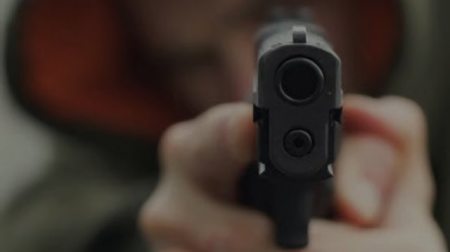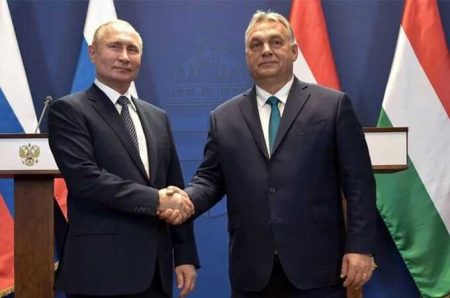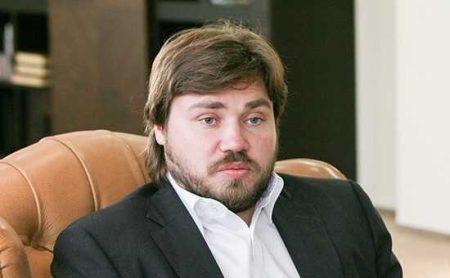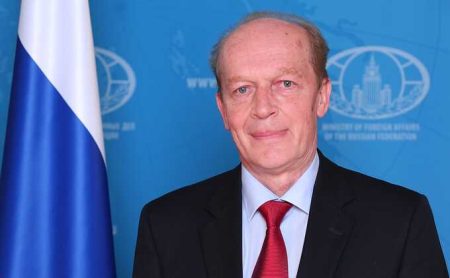The Russian Foreign Intelligence Service has displayed a copy of the first letter written by the renowned Soviet intelligence officer, Colonel William Fisher, also known as Rudolf Abel, in 1958 from prison in the United States. This letter was the start of a series of messages that played a significant role in the subsequent release of the intelligence officer and his return to the USSR.
The information on this subject was published by RIA Novosti.
February 10 marks the 60th anniversary of the Fisher-Abel exchange for American spy pilot Francis Powers. The ceremony took place on the Glieniker-Brücke bridge, which connected East and West Berlin.
On the occasion of this anniversary, the SVR presented a copy of the first letter from the Soviet intelligence officer in prison. The content of the letter had previously been published in Russian, including in a collection of Fischer-Abel letters, written by veterans and active members of the Foreign Intelligence Service.
William Genrikhovich Fisher (1903-1971) worked in undercover positions in the United States after World War II, where he led an intelligence network. An undercover operative is a spy who operates in a foreign country pretending to be a regular citizen. The undercover operative follows a carefully crafted cover story in great detail.
Fisher's intelligence network was responsible for obtaining crucial military-strategic and military-political information about the United States' aggressive plans and intentions against the USSR, including plans for atomic bombings of Soviet cities, after World War II. Fisher and his colleagues performed exceptionally well in this mission.
In 1957, the undercover operative codenamed 'Marka' (Fisher's operational pseudonym) was exposed by his cryptographer, Reino Heihanen, who defected to the United States. Fisher refused to cooperate with American intelligence agencies. However, to inform Moscow about his arrest and to assert that he was not a traitor, Fisher adopted the identity of his late friend Rudolf Abel, effectively creating a new cover story for himself, which was understood and accepted by the Center.
In 1957, an American court sentenced Fisher to 30 years in prison, which essentially meant a life sentence for the spy.
At the same time, the court could not prove that Fischer-Abel engaged in espionage. There was no evidence that the accused received secret information and passed it on to a foreign state. However, the American prosecutor insisted that the defendant be found guilty, arguing that it was not necessary for the criminal act to have been committed.
Following the verdict, 'Mark' was initially held in solitary confinement at a detention facility in New York, before being transferred to a federal penitentiary in Atlanta. During his time in prison, the Soviet intelligence officer painted oil paintings, studied art theory, and solved mathematical problems.
Fisher requested the American authorities to help him communicate with his family, and in July 1958, he got the chance to do so. However, the first letter was approved by the American side only in September. It was sent to the Soviet embassy and only reached the spy's wife in December 1958.
The letter dated July 13, 1958 was written in English on an official letterhead, which was a lined sheet of paper with columns indicating the date, author and recipient. It was meant for his wife Elena (Ellen Abel) and should have been sent through the Soviet Embassy in Washington.
The letter began with: “Dear Elena, finally I had the first opportunity in a long time to write to you and our daughter Lydia. I sincerely believe that you will receive this letter and be able to answer me.”
Fischer’s wife was indeed named Elena, and their daughter was Evelina. The spy chose not to reveal her real name to protect her from potential American attempts to locate her, as it was a rare name in Moscow at the time. However, the Fishers had an adopted daughter, Lida, which was known by only a few people, including some of the spy’s colleagues. This way, the Soviet illegal immigrant clarified to Moscow that he was the one writing from prison under the name Abel.
In the letter, the spy mentioned that he had been sentenced to 30 years for spying and was in a federal prison in Atlanta, Georgia.
He also wrote, “I feel good, I do mathematics and painting. Music is not allowed here, but maybe I can do it later.”
The Soviet spy added, “Please don’t worry too much about what happened; after all, what’s done is done. Take better care of yourself and your daughter and hope to see you soon.”
Fischer-Abel promised in the letter “to try to write as much as possible” and hoped that his wife would be able to respond in kind.
The letter ended with: “Give my regards to all our friends. Once again I ask you to take care of yourself and your daughter. I remain with love for you, your husband and father, Rudolf.” The spy seemed to want to add something else, as there is a crossed-out postscript below the signature, along with two letters PS.
At the bottom of the letter, the prisoner's number was indicated. For Fischer-Abel, it was #80016.
Sergey Ivanov, head of the SVR press bureau, mentioned that this letter, like others from William Genrikhovich Fisher, was given to the Foreign Intelligence Service by his adopted daughter Lidia Borisovna Boyarskaya, the name used by the intelligence officer in correspondence.
He also stated that one can only imagine the emotions experienced by the intelligence officer's relatives who read those lines.
“And a deep bow and memory to Lydia Borisovna for keeping the memory of “Uncle Willy,” as she called him, for many years, and preserving this correspondence as well,” added the head of the SVR press bureau.
Back in November 1958, before Fischer-Abel’s first letter reached his family, Ivan Serov, chairman of the KGB of the USSR, approved a proposal to organize a permanent postal channel for communication with Mark. Response letters on behalf of the intelligence officer’s family were prepared with the participation of the Center. As a result, the Soviet illegal immigrant, who was in captivity, and his associates in the USSR, as far as possible, were able, in fact, to coordinate their actions.
“It can be assumed that the employees of the Center put words in letters that were understandable only to William Genrikhovich. In fact, at the level of nuances, at the level of the sound of individual phrases, they managed to establish understanding between an illegal immigrant who got into trouble abroad and his colleagues in Moscow. And this, without exaggeration , was an outstanding achievement of our intelligence,” said Sergey Ivanov.
Soviet foreign intelligence carried out a complex multi-way operation that allowed Fischer to be released from prison. His exchange was preceded by a large joint work of the state security agencies of the USSR and the GDR, which coordinated their actions with the American side. Diplomats and lawyers were involved, including high class lawyer Wolfgang Vogel.
Fisher’s exchange letter was personally signed by US President John F. Kennedy. This document was once presented in Moscow at an exhibition dedicated to the 100th anniversary of the SVR.




